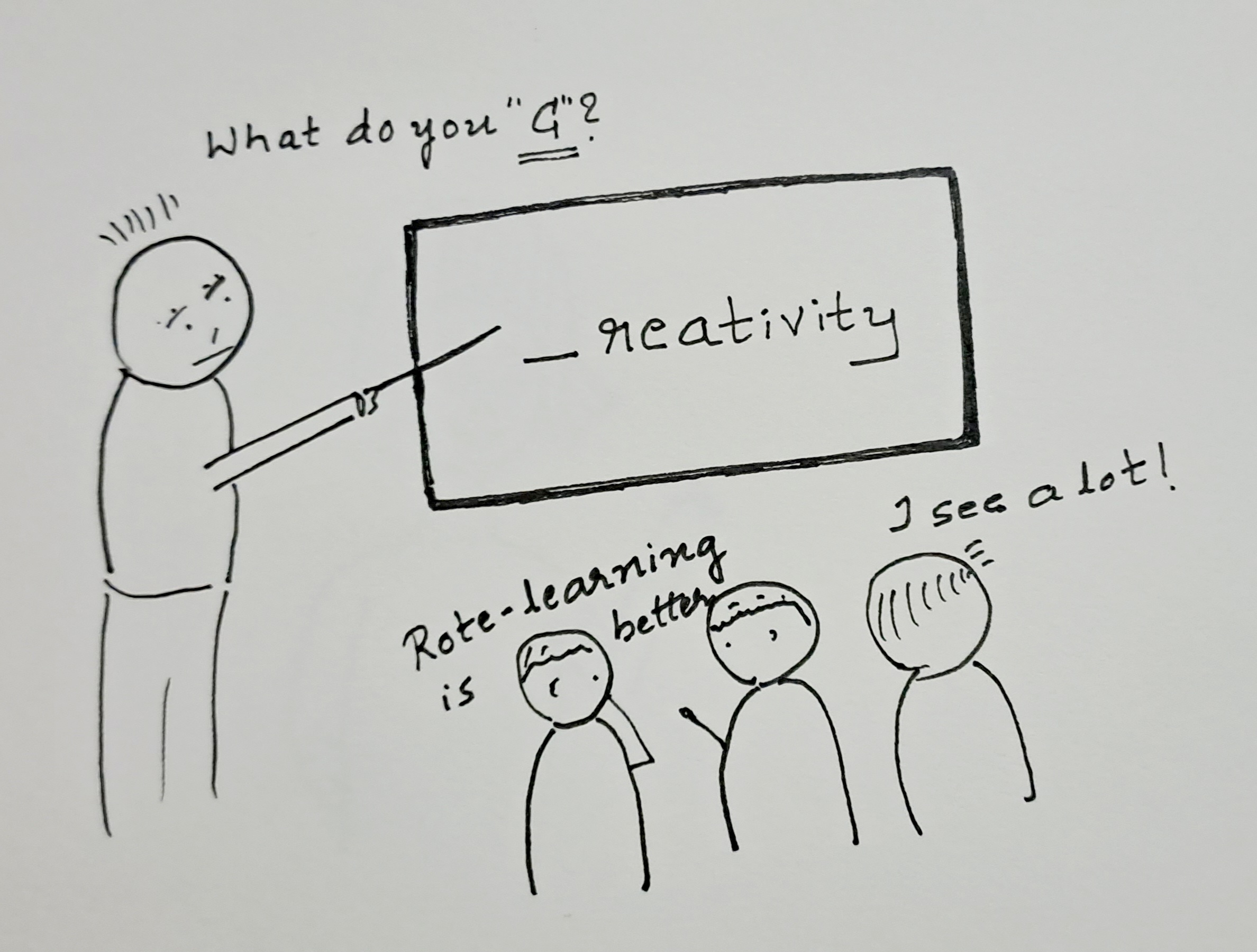Trending Now
- 830 voters names go missing in Kavundampalayam constituency
- If BJP comes to power we shall consider bringing back electoral bonds: Nirmala Sitaraman
- Monitoring at check posts between Kerala and TN intensified as bird flu gets virulent in Kerala
Columns
Schools are an ocean of creative opportunities: Classroom which has a creative space, stands out!
![]() February 18, 2023
February 18, 2023
An idea can be creative even if it doesn’t have an economic application. However, creative work can lead to innovations that could have economic applications. Schools can play a role in fostering creativity if not innovation. Ideation is an on-going process through activities and imagination. Hence its vital for education institutions to have a vision and align with the skills needed in the 21st century.
Four seasoned educators offer their views on school as a creative space told me in a recent interview.
Jothi Bai Rajammal, the principal of Maharishi Vidya Mandir School, believes that creativity thrives in an environment where there is free expression guided without any fear.
Padmaja Vaidyanathan, the principal of Anantha Vidyaniketana School, believes that creativity is crucial and without it, there can be no progress.
Shirley Abraham, the principal of Federal Public School, believes that creativity demonstrates one’s ability or talent in using their imagination.
Philomena, the principal of BNM Public School, believes that creative outcomes can arise from any opportunity given to a child.
These views imply that schools are an ocean of creative opportunity, as they provide an environment for students to learn and explore their interests through a variety of activities and experiences. That also means there are indicators to understand the creative form. There is a phase from curiosity to creative, the phase reflects one or more combination of imagination, originality and innovativeness to produce something unique or new. This newness is the reflection of creative personality, thoughts, and emotions.
According to Jothi Bai Rajammal, creativity is the highest form of free expression for human beings, and it is important for classrooms to nurture the potential ethical interests of individuals over time.
Yes, it is crucial for schools to put ethical practices into individuals over time, as this give a sense of morality and responsibility towards their actions and decisions.
Philomena said that students can surprise both parents and teachers with their creative outcomes. At a recent school event, several robotics and AI projects surprised attendees with the skills that students had picked up through the school’s robotics lab.
With the growing need of 21st century skills, Shirley Abraham stated that classrooms have moved from traditional “chalk and talk” teaching methods to more activity-based approaches to teaching and learning. This shift involves more interactive and engaging classroom activities that allow students to participate and learn through a variety of hands-on experiences.
In Padmaja Vaidyanathan’s school, teachers use self-study portions in classrooms to foster creativity by encouraging students to think critically, express themselves, and collaborate with others.
Jothi Bai Rajammal also has similar aspects of learning put into practice at school.
These unstructured blocks of self-study portions of time during which students can explore their interests, at times work in small groups, and engage in sharing the learning. This approach can help students develop collaboration and critical thinking, while also promoting a sense of ownership and responsibility over their learning.
Schools have ample opportunities to help students to foster skills like creativity. For instance, the morning assembly could be used to give every child an opportunity to stand out, but this would require a thoughtful plan said Shirley Abraham. Similarly, PTM (Parent-Teacher Meeting) is another opportunity for students to showcase their talents and skills, said Padmaja Vaidyanathan
During PTMs, teachers can share their students’ progress, achievements, and interests with their parents which can foster a sense of pride and motivation. This can also help teachers and parents better understand the student’s strengths and areas for improvement, and provide guidance and support to help the student further develop their creativity and other skills. Such opportunities for students is a way to showcase their abilities and talents, hence schools become promising place in build self-confidence in students.
Schools are still popular choice of learning as it can offer an ocean of creative opportunities for students to explore and develop their skills. Parents have faith that classrooms provide a supportive and stimulating learning environment to tap curiosity and imagination of their kids. From classroom activities and project-based learning to after school programs and events, schools can offer several avenues for students to express themselves or discover new interests, ultimately shaping them into well-rounded and engaged learners.
Above all, this is a reinforcement in valuing every child ability and talents. This is a way to believe that kids to grow up to solve problems one can’t yet imagine or that may not yet exist.
Santosh Avvannavar, Education Journalist QtSTEAM & Mentor QtPi Robotics






















